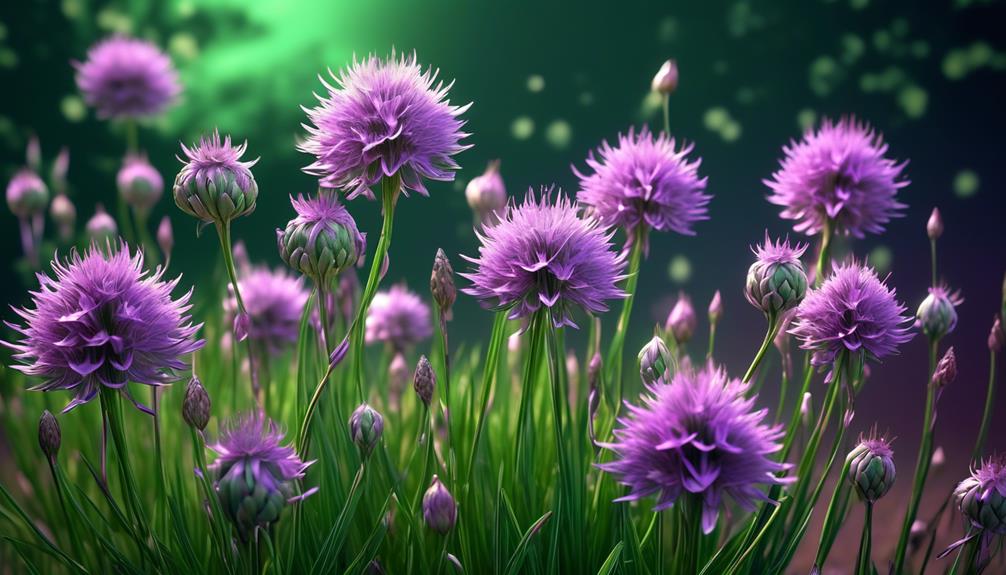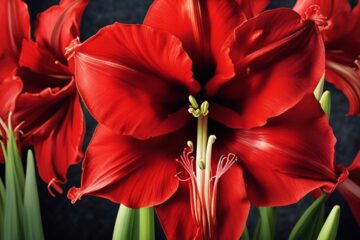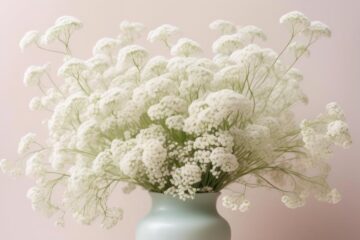Like a hidden gem in a sea of green, the chives in bloom reveal an unseen purple crown that captivates the eye. These delicate flowers, akin to stars in the night sky, bring a touch of elegance to the culinary world.
But there's more to these blossoms than meets the eye. As you explore the secrets of the chive's purple crown, you'll uncover a world of flavor and beauty that will leave you wanting to uncover even more.
So, prepare to embark on a journey where the ordinary becomes extraordinary, and where the unseen becomes a feast for the senses.
Chive Blossom Appearance
Chive blossoms, with their light purple, star-shaped flowers measuring approximately two inches in diameter, appear at the top of chive plant stems in late spring or early summer. These blossoms are a beautiful addition to any garden, adding a pop of color and a delicate touch.
Each blossom consists of several florets joined together at the flower head, creating a stunning display. The chive blossom's appearance is both elegant and unique, with its vibrant purple hue and star-like shape.
When in full bloom, these flowers attract bees and other pollinators, making them not only visually appealing but also beneficial to the surrounding ecosystem.
Whether used for culinary purposes or simply enjoyed for their beauty, chive blossoms are a lovely addition to any garden.
Story and Origins
The story and origins of chive blossoms can be traced back to ancient civilizations, where they were revered for their culinary and medicinal properties. These delicate purple flowers have been used for centuries to enhance the flavor and aroma of dishes.
Just like their onion and garlic counterparts, chive blossoms add a subtle hint of onion and garlic to recipes, making them a popular choice as a garnish for salads and crudite platters. They can also be added to soups, sauces, and potato and egg dishes.
Additionally, chive blossoms have been valued for their medicinal properties, with ancient civilizations using them as a natural remedy for various ailments.
Today, chive blossoms can be found at farmers markets and fresh food shops, adding a touch of color and flavor to your meals.
Cultural Significance
As you explore the cultural significance of chive blossoms, you'll discover their deep-rooted connections to various cuisines and traditions.
In culinary traditions around the world, chive blossoms are prized for their delicate flavor and vibrant purple hue. They're used in a wide range of dishes, from salads to soups, adding a subtle onion-like taste and a pop of color.
In some cultures, chive blossoms are associated with spring festivals and celebrations, symbolizing new beginnings and the arrival of warmer weather. Additionally, in certain traditions, chive blossoms hold symbolic meanings related to spirituality and renewal.
Their aromatic nature also makes them a popular choice for cultural ceremonies and rituals, often used alongside other herbs like chamomile.
The cultural significance of chive blossoms highlights their versatility and importance in various cultural practices and cuisines.
Hidden Messages in Blooms
Have you ever wondered if chive blossoms hold secret messages within their delicate petals? While it may sound like something out of a fairy tale, there's no evidence to suggest that chive blossoms have hidden messages.
However, these beautiful blooms do have a symbolic meaning in some cultures. In Chinese culture, chives are associated with good luck and are often used in festive dishes to bring prosperity and happiness.
In addition, chive blossoms can add a touch of elegance and color to your culinary creations. Whether you're using them as a garnish or incorporating them into your recipes, chive blossoms are sure to impress with their mild garlic aroma and delicate onion-garlic flavor.
Chive Blossom Watering Tips
To ensure healthy growth and vibrant blooms, water your chive blossoms regularly and at the base of the plant, avoiding wetting the delicate flowers. Chive blossoms prefer well-drained soil, so it's important to keep the soil consistently moist but not waterlogged.
During dry spells, water them more frequently to prevent the soil from drying out completely. Use a watering can or a gentle stream from a hose to water them directly at the base, ensuring that the water reaches the roots. Avoid watering from overhead as this can lead to moisture-related issues and spoil the delicate flowers.
Mulching around the chive plants can help retain soil moisture, but be careful not to pack the mulch tightly around the base of the plant.
Gift-Giving Occasions
For special occasions or thoughtful gestures, chive blossoms make a unique and delightful gift. These light purple, star-shaped flowers not only add beauty to any setting but also bring a delicate onion-garlic flavor to culinary creations. Whether it's a birthday, anniversary, or a simple expression of gratitude, presenting a bouquet of chive blossoms is sure to impress. To give you some inspiration, here are a few gift-giving occasions where chive blossoms can shine:
| Occasion | Gift Idea |
|---|---|
| Mother's Day | A chive blossom-infused vinegar |
| Housewarming Party | A bouquet of fresh chive blossoms |
| Get Well Soon | A homemade chive blossom and chamomile tea |
These gift ideas show your thoughtfulness and creativity, making them perfect for any occasion. So, the next time you're searching for a unique and meaningful gift, consider the delightful surprise of chive blossoms in bloom.
Concluding Thought
In closing, the Concluding Thought{cta} serves as a vital element that solidifies the main ideas and leaves a lasting impact on readers. It summarizes the key points discussed throughout the article, providing closure and a sense of satisfaction.
A well-crafted Concluding Thought{cta} reinforces the writer's purpose and can provoke further thinking or action. In the case of 'Chives in Bloom: The Unseen Purple Crown', the Concluding Thought{cta} might suggest exploring the soothing properties of chamomile, which can complement the vibrant and uplifting nature of chives. By offering this potential future development, the writer leaves the reader with a lasting impression and encourages them to delve deeper into the topic.
Crafting a strong Concluding Thought{cta} is crucial for leaving a powerful and memorable impact on the reader's thoughts and emotions.
Frequently Asked Questions
Can You Eat Chives With the Purple Flower?
Yes, you can eat chives with the purple flower. They have a mild garlic flavor and can be used as a garnish, added to soups and sauces, and even used to flavor vinegar. Enjoy!
Should You Remove the Blooms on Chives?
Yes, you should remove the blooms on chives. They can be bitter and tough, so it's best to remove them before using the chives in your dishes.
Are Chives Still Good When They Flower?
Yes, chives are still good when they flower. The vibrant purple blooms not only add beauty to your garden, but they also offer a mild garlic flavor to your dishes. Don't hesitate to use them in your recipes!
What Does It Mean When Chives Flower?
When chives flower, it means they have reached maturity and are ready to reproduce. The beautiful purple blooms not only add visual appeal but also offer a mild garlic flavor to enhance your dishes.





